
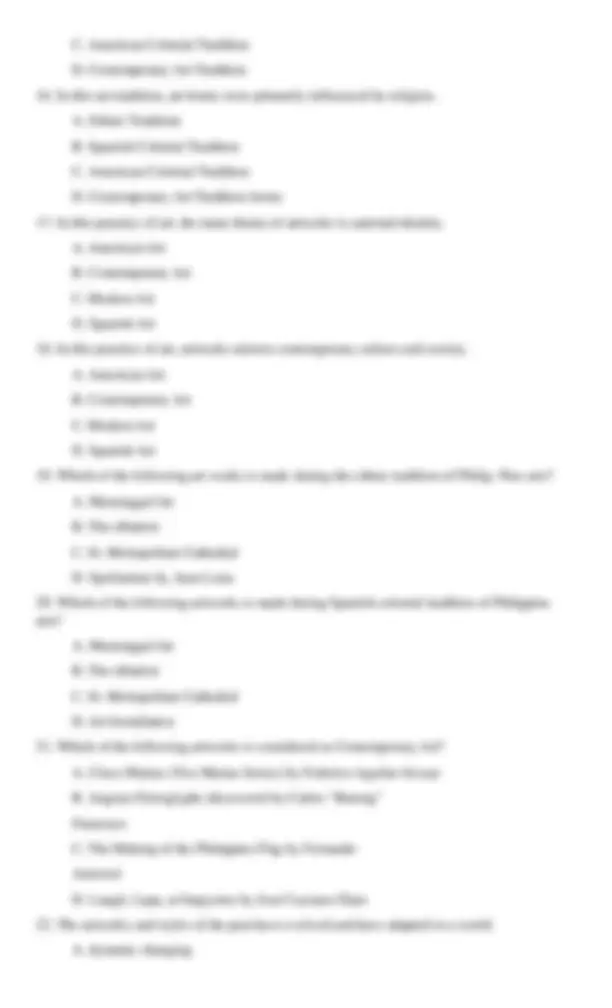
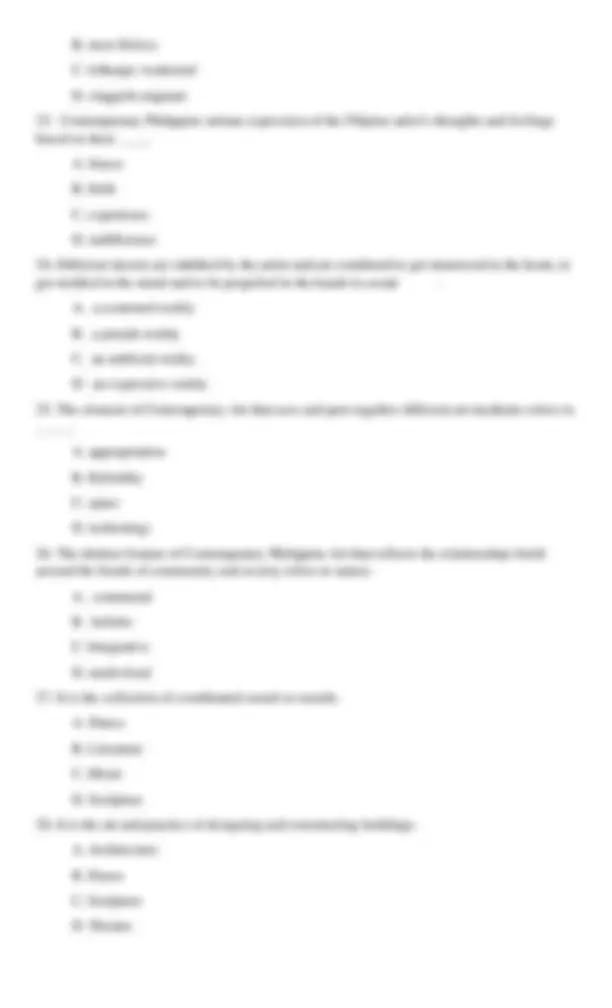
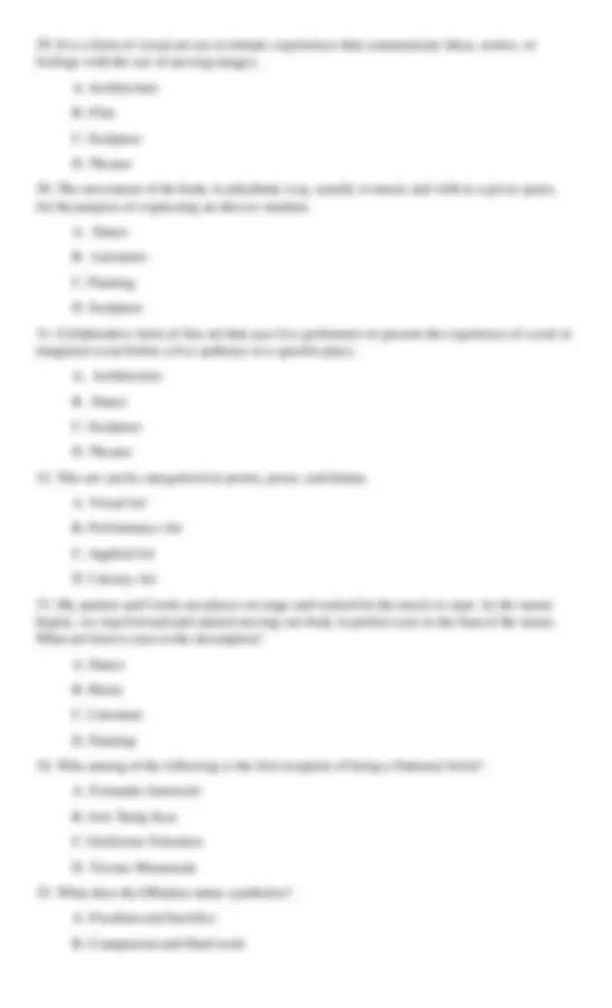
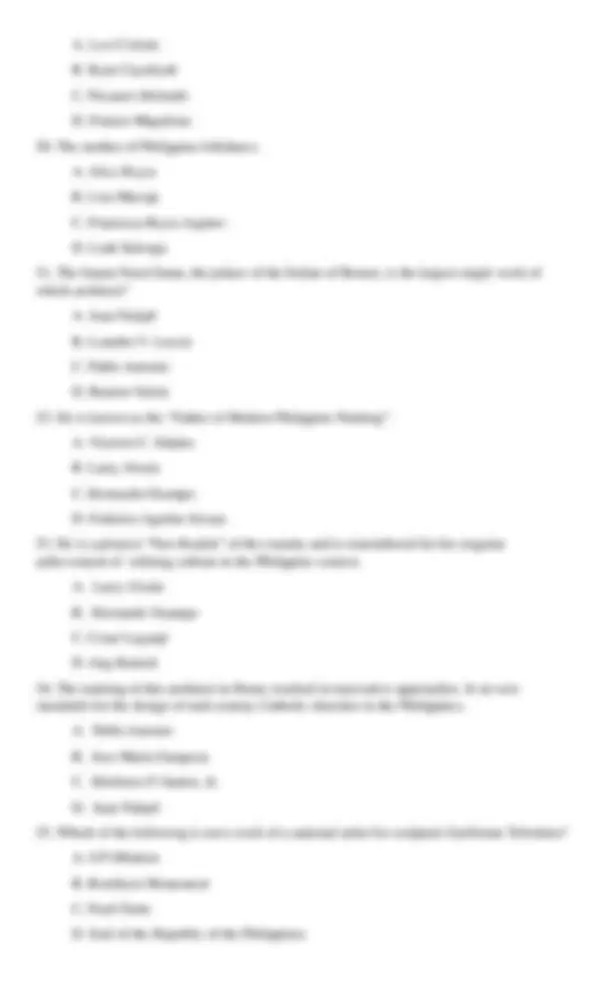
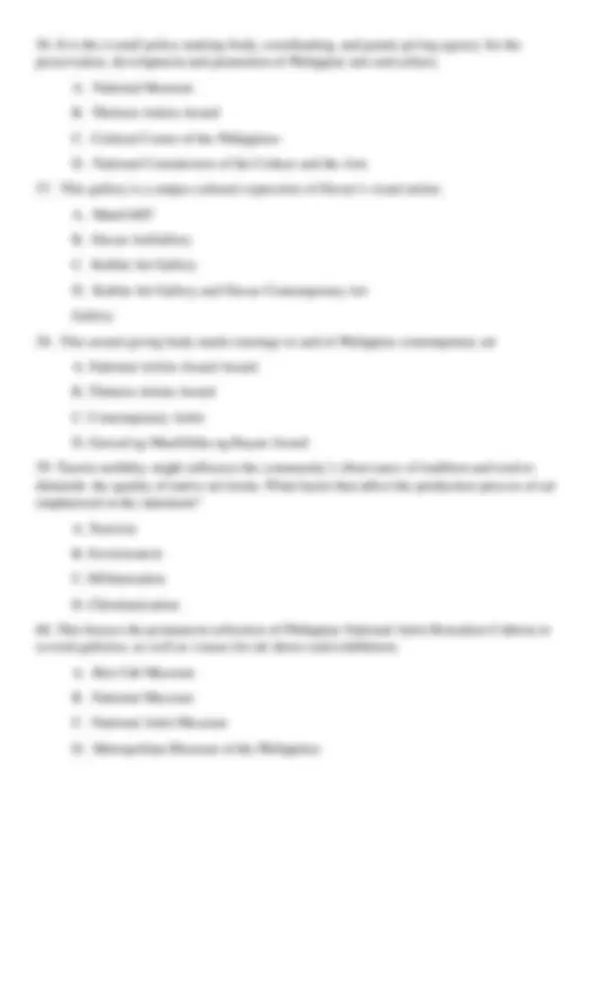
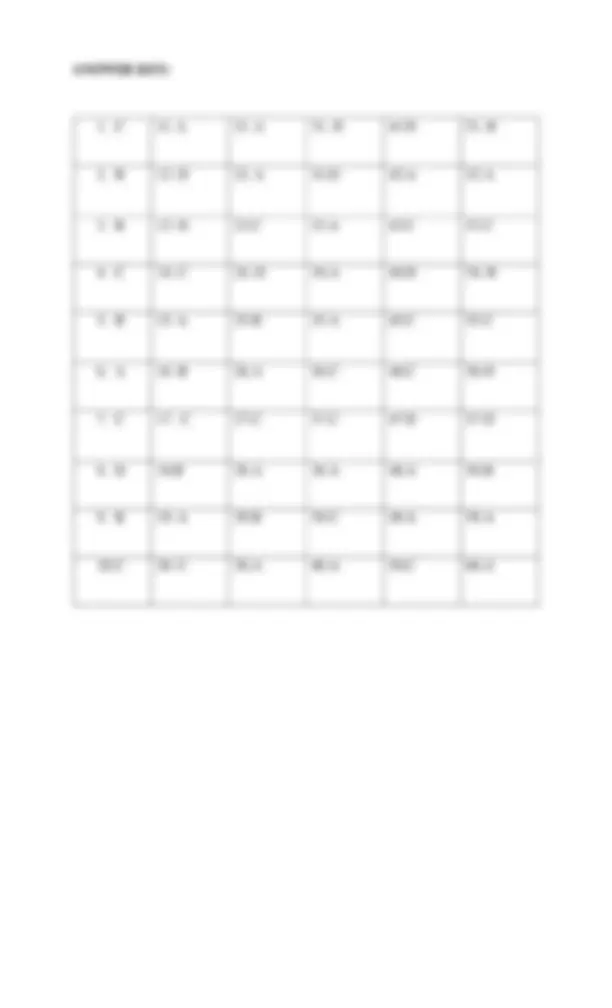


Study with the several resources on Docsity

Earn points by helping other students or get them with a premium plan


Prepare for your exams
Study with the several resources on Docsity

Earn points to download
Earn points by helping other students or get them with a premium plan
Community
Ask the community for help and clear up your study doubts
Discover the best universities in your country according to Docsity users
Free resources
Download our free guides on studying techniques, anxiety management strategies, and thesis advice from Docsity tutors
Unlock the beauty of the arts with our "Arts Appreciation Practice Test"! Perfect for students, educators, and enthusiasts, this comprehensive test prep tool covers a wide range of artistic disciplines. Dive into painting, sculpture, music, literature, and more with expertly crafted questions designed to enhance your understanding and appreciation. Gain insights, build confidence, and deepen your love for the arts. Invest in your passion today and elevate your learning experience!
Typology: Exercises
1 / 10

This page cannot be seen from the preview
Don't miss anything!







a. Color b. Form c. Line d. Shape
a. Color b. Form c. Line d. Shape
a. Harmony b. Rhythm c. Movement d. Variety
a. Balance b. Color c. Harmony d. Proportion
a. Contemporary b. Integral c. Modern d. Temporary
a. Gender b. Generality c. Genre d. Gentile
a. Applied b. Performance c. Literary d. Visual
A. Contemporary B. Integral C. Literary D. Temporary
A. Visual Arts
B. Literature C. Theater Art
D. Film and Broadcast
A. It is an art produced in the second half of the 20th/21st century.
B. It is an offshoot of social realism brought about by Martial Law. C. A and B D. None of the above
A. Architecture B. Dance
C. Visual Arts D. Photography Conceptual arts
A. Someone who communicates a message B. Someone who puts his ideas into practice
C. Someone who brings the past to the future D. Someone who taps audience’s experience to make the message more personal
A. Someone who shows the future
B. Someone who puts audience to other’s reality C. Someone who uses resources available in the environment D. Someone who showed important lessons in the
past through arts
A. Ethnic Tradition B. Spanish Colonial Tradition
B. inert lifeless C. lethargic weakened
D. sluggish stagnant
A. biases B. birth
C. experience D. indifference
A. a contorted reality
B. a pseudo reality C. an artificial reality D. an expressive reality
A. appropriation
B. Hybridity C. space D. technology
A. communal B. holistic C. Integrative
D. multi-focal
A. Dance
B. Literature C. Music
D. Sculpture
A. Architecture
B. Dance C. Sculpture D. Theater
A. Architecture B. Film
C. Sculpture D. Theater
A. Dance B. Literature
C. Painting D. Sculpture
A. Architecture
B. Dance C. Sculpture D. Theater
A. Visual Art B. Performance Art
C. Applied Art D. Literary Art
A. Dance B. Music C. Literature
D. Painting
A. Fernando Amorsolo
B. Jose Tanig Joya C. Guillermo Tolentino
D. Vicente Manansala
A. Freedom and Sacrifice
B. Compassion and Hard work
B. wood carvings C. embroidery
D. plastic arts
A. Poem B. t’nalak C. Suguidanon
D. Biag ni Lam-ang
A. Ginaw Bilog B. Teofilo Garcia
C. Alonzo Saclag D. Uwang Ahadas
A. physical and spiritual B. emotional and spiritual
C. social and spiritual D. personal and spiritual
A. limit
B. share C. promote D. appreciate
A. optimistic B. generous C. dreamer
D. visionary
A. Francisca Reyes Aquino
B. Alice Reyes C. Liza Macuja D. Lea Salonga
A. Levi Celerio B. Ryan Cayabyab
C. Nicanor Abelardo D. Francis Magalona
A. Alice Reyes B. Liza Macuja
C. Francisca Reyes Aquino D. Leah Salonga
A. Juan Nakpil
B. Leandro V. Locsin C. Pablo Antonio D. Ramon Valera
A. Victorio C. Edades B. Larry Alcala
C. Hernando Ocampo D. Federico Aguilar Alcuaz
A. Larry Alcala
B. Hernando Ocampo C. Cesar Legaspi D. Ang Kiukok
A. Pablo Antonio
B. Jose Maria Zaragoza C. Ildefonso P. Santos, Jr.
D. Juan Nakpil
A. UP Oblation
B. Bonifacio Monument C. Pearl Farm D. Seal of the Republic of the Philippines